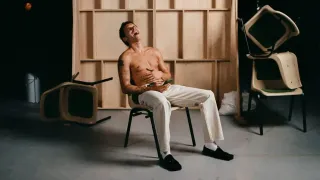August 16, 2017
Supervisor Jane Kim Preserves LGBTQ History in San Francisco
READ TIME: 3 MIN.
The GLBT History Museum is well known as a destination in the Castro neighborhood, but the archives of the GLBT Historical Society have long been located in another part of the city: For more than 20 years, the collections have been housed in buildings in Mid-Market, then the adjacent South of Market and now back in Mid-Market. Representing both of those neighborhoods is San Francisco Supervisor Jane Kim, whose district also includes the city's greatest concentration of museums.
A former civil rights attorney elected in 2011, Kim has long been an advocate for the LGBTQ community. In recent years, she has actively included queer heritage and historic preservation issues on her policy agenda. In this exclusive In this exclusive interview from the GLBT Historical Society newsletter, History Happens, the supervisor discusses her efforts on behalf of a number of LGBTQ public history initiatives and explains her support for the society's campaign to create a New Museum of LGBTQ History and Culture."
History Happens: You have supported the South of Market Leather History Alley, which was created in collaboration with a real-estate developer. What are other ways community historians could partner with the City and with developers to commemorate San Francisco's LGBTQ history?
Kim: There is a growing movement of examining intangible cultural assets as they pertain to LGBTQ history. Our office has been partnering with preservationists and community activists on Ringold Alley, Eagle Plaza, the preservation of the Lone Star and the Stud, and creating the first transgender and LGBT leather cultural districts. The Compton's Transgender Cultural District passed unanimously, and we recently secured seed funding for place-making, job development and staffing for the district, with of $375,000 from our City budget and $300,000 in developer fees.
History Happens: The City of San Francisco and a wide range of community groups and individuals are currently working to develop a Citywide LGBTQ Cultural Heritage Strategy. What impact do you hope this report will have on LGBTQ preservation efforts and overall city policy?
Kim: The report should provide a roadmap and set of principles to both preserve and continue to grow our LGBTQ assets and showcase the unique LGBTQ character of each neighborhood, whether it's lesbians at the Artemis Caf� on Valencia, leather daddies at the Toolbox in SoMa, or transgender women at the Chukker Club in the Tenderloin.
History Happens: You and Supervisor Jeff Sheehy coauthored a unanimously passed resolution earlier this year calling on the City to support the GLBT Historical Society's initiative to create a world-class New Museum of LGBTQ History and Culture. What are the next steps the City should take to put this resolution into action? And how can the community help?
Kim: We need to engage in fundraising. The reality is that after the demise of the state redevelopment agency, we have less funding to sustain our museums in South of Market. The story of the Jewish Museum, the Museum of the African Diaspoara (MOAD), the Mexican Museum and Yerba Buena all had a nexus to redevelopment site acquisition and funds. I still think the City can also play a crucial role, such as identifying surplus properties for this use. This will need to be a collaborative effort. Of course, I would love to see this museum near all of its other sister museums in SoMa.
We need to develop a vision of how we hope this museum will serve our community, through showcasing the history and assets of the LGBTQ community. With a strong vision, a serious capital campaign and a committee to identify a site or building, the City and the community can and should work together to add this to our sister museums. Perhaps even join them where I serve as supervisor in District Six.
For more information, visit www.glbthistory.org/donate






